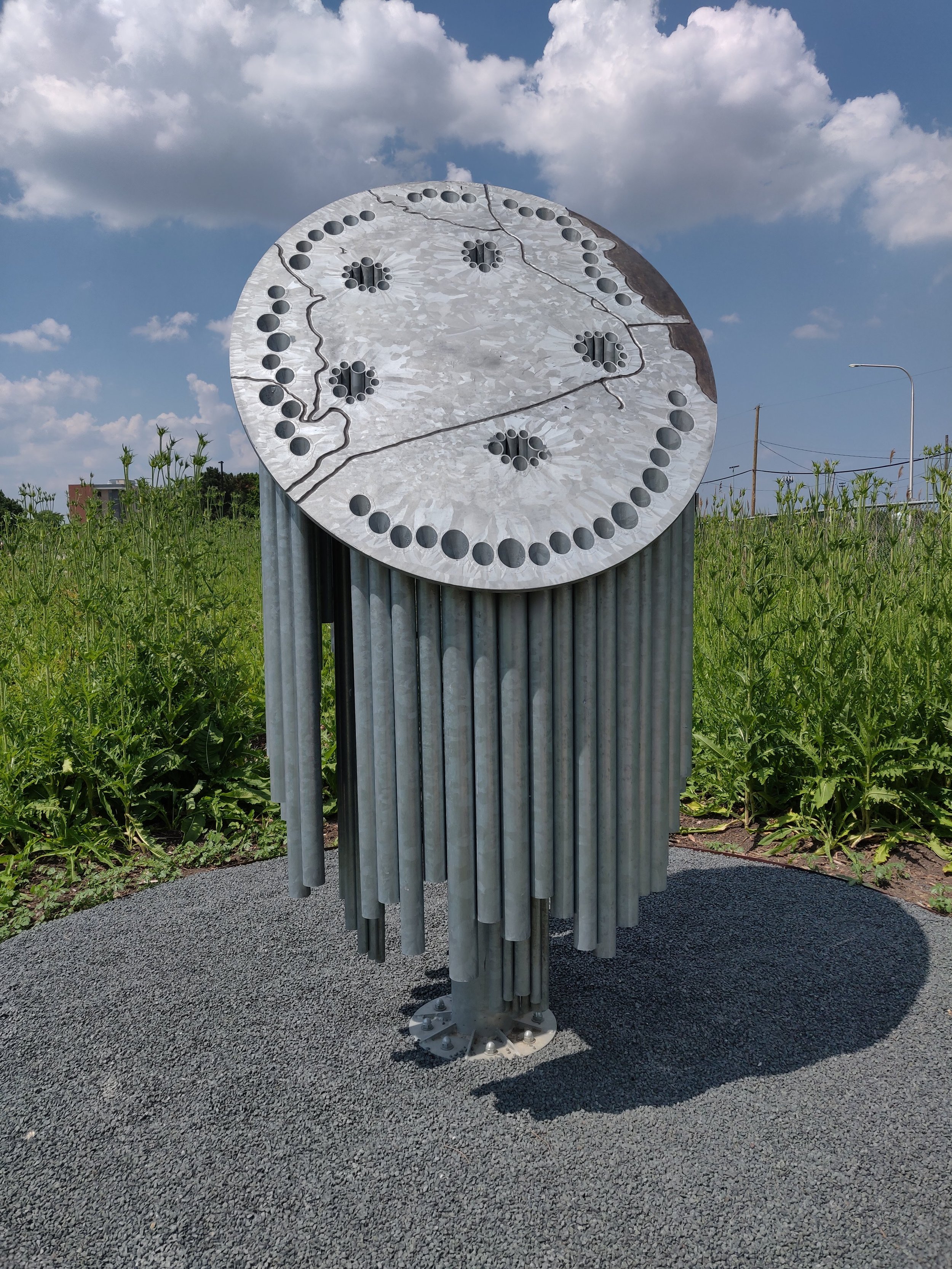
Patterns at scale
The structure of resilience
In this collaboration with sculptor Jamie Topper, (‘Nesewin: How to Breathe Underwater’), we looked at native wetland plants, like willow and birch, to see how they have adapted to the cycles of periodic flooding that define the wetland environment. We found the morphological structure called aerenchyma to be a powerful metaphor for resiliency and survival.
Aerenchyma are air spaces within plants that allow for survival in low oxygen wetlands. Aerenchyma also provide buoyancy to help stabilize the plant in the water column.
The sculpture’s title, Nesewin, means ‘to breathe’ in the Anishinaabe language spoken by the 3 Fires Confederacy of indigenous people of this area.
You can learn more about the process here.






